Publications
At the end of this page, you can find the full list of publications. All papers are also available on arXiv.
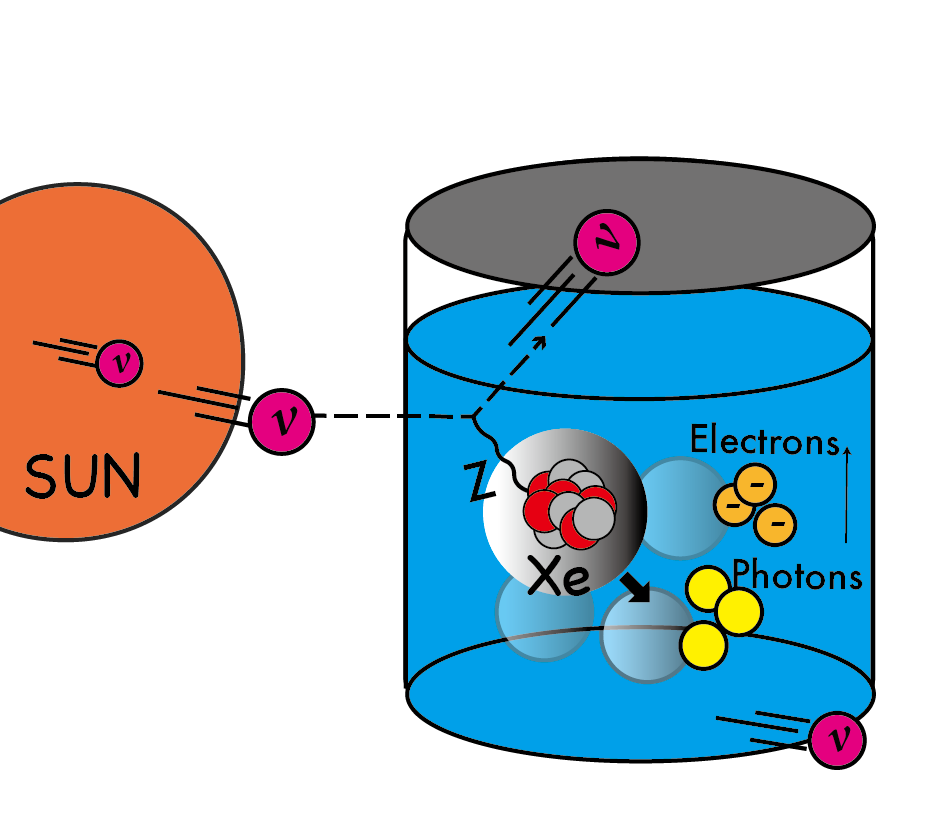
We present the first measurement of nuclear recoils from solar 8B neutrinos via coherent elastic neutrino-nucleus scattering with the XENONnT dark matter experiment. The central detector of XENONnT is a low-background, two-phase time projection chamber with a 5.9 t sensitive liquid xenon target. A blind analysis with an exposure of 3.51 t×y resulted in 37 observed events above 0.5 keV, with (26.4+1.4−1.3) events expected from backgrounds. The background-only hypothesis is rejected with a statistical significance of 2.73 σ. The measured 8B solar neutrino flux of (4.7+3.6−2.3)×10^6cm−2s−1 is consistent with results from dedicated solar neutrino experiments. The measured neutrino flux-weighted CEνNS cross-section on Xe of (1.1+0.8−0.5)×10^−39cm2 is consistent with the Standard Model prediction. This is the first direct measurement of nuclear recoils from solar neutrinos with a dark matter detector.
E. Aprile et al.(XENON Collaboration)
Phys. Rev. Lett. Accepted 25 September 2024
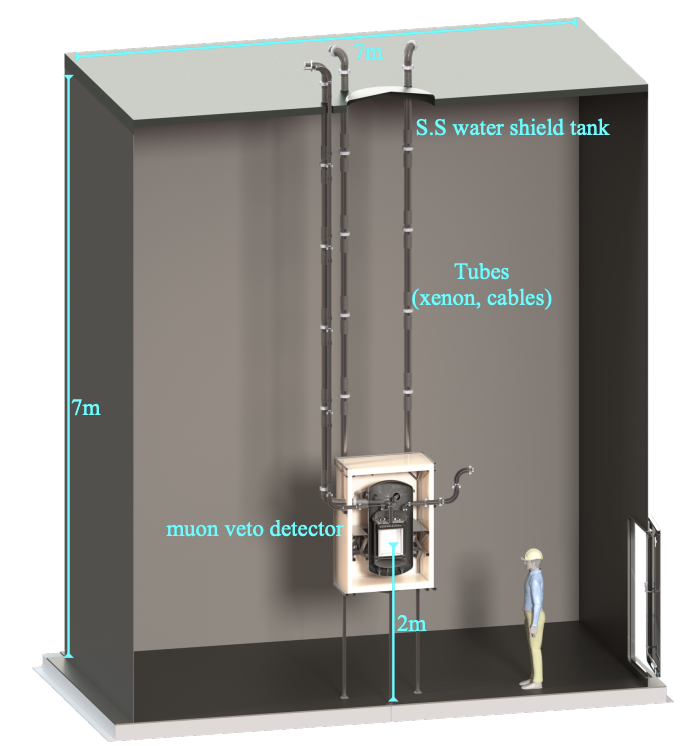
Coherent elastic neutrino-nucleus scattering (CEvNS) provides a unique probe for neutrino properties Beyond the Standard Model (BSM) physics. REactor neutrino LIquid xenon Coherent Scattering experiment (RELICS), a proposed reactor neutrino program using liquid xenon time projection chamber (LXeTPC) technology, aims to investigate the CEvNS process of antineutrinos off xenon atomic nuclei. In this work, the design of the experiment is studied and optimized based on Monte Carlo (MC) simulations. To achieve a sufficiently low energy threshold for CEvNS detection, an ionization-only analysis channel is adopted for RELICS. A high emission rate of delayed electrons after a big ionization signal is the major background, leading to an analysis threshold of 120 photo-electrons in the CEvNS search. The second largest background, nuclear recoils induced by cosmic-ray neutrons, is suppressed via a passive water shield. The physics potential of RELICS is explored with a 32 kg-yr exposure at a baseline of 25 m from a reactor core with a 3 GW thermal power. In an energy range of 120 to 240 PE, we expect 4902.4 CEvNS and 1318.4 background events. The sensitivity of RELICS to the weak mixing angle is investigated at a low momentum transfer. Our study shows that RELICS can further improve the constraints on the non-standard neutrino interaction (NSI) compared to the current best results.
Phys. Rev. D Accepted 25 September 2024
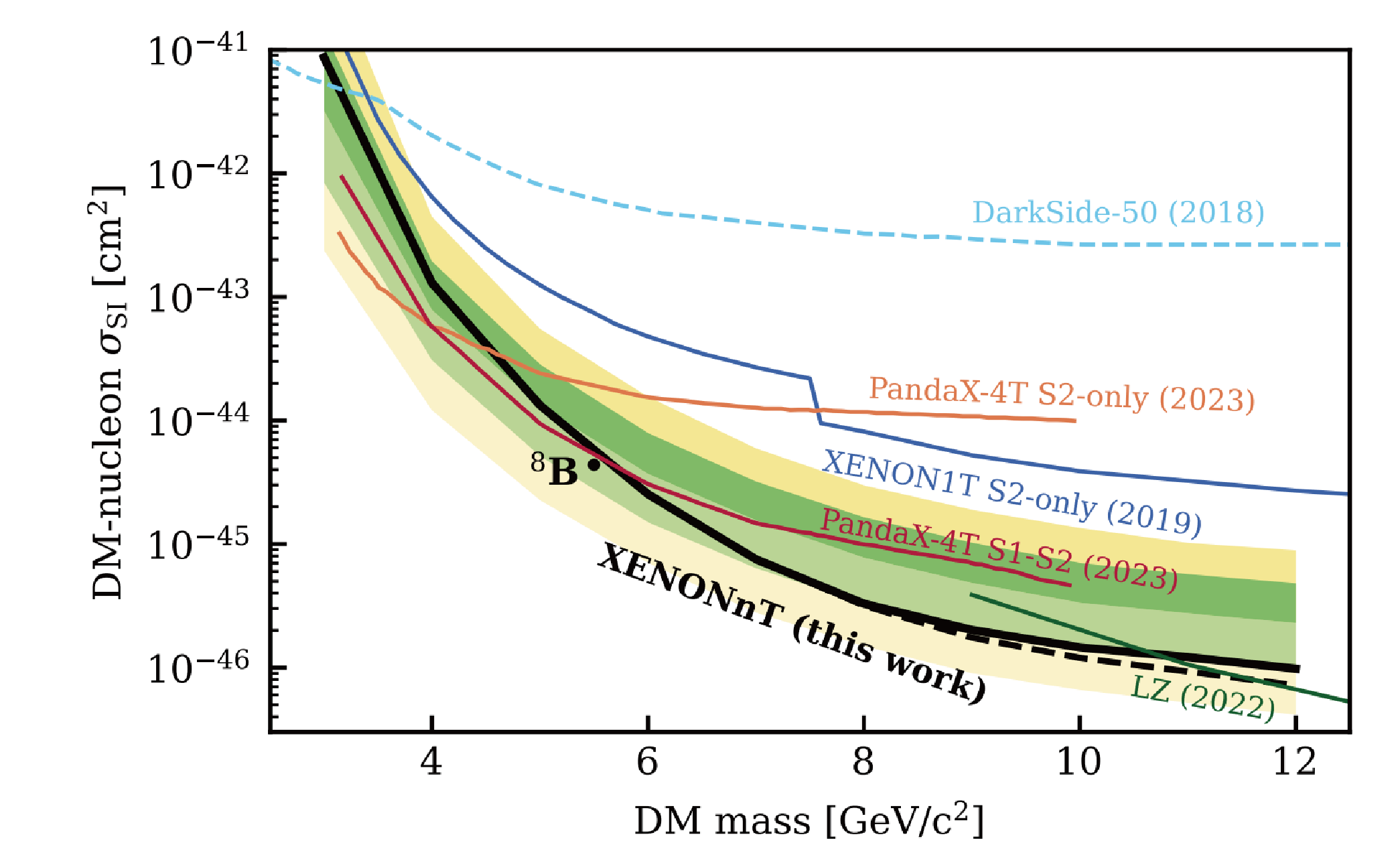
We search for dark matter (DM) with a mass [3,12] GeV / c^2 using an exposure of 3.51 3.51 t×y with the XENONnT experiment. We consider spin-independent, spin-dependent, momentum-dependent, mirror DM, and self-interacting DM with a light mediator coupling to Standard Model particles. Using a lowered energy threshold compared to the previous WIMP search, a blind analysis of [0.5, 5.0] keV nuclear recoil events reveals no significant signal excess over the background. XENONnT excludes spin-independent DM-nucleon cross sections >2.5 × 10^-45 cm^2 at 90 % confidence level for 6 GeV / c^2 DM. The solar B8 neutrino coherent elastic neutrino-nucleus scattering background accounts for approximately half of the background in the signal region. In the considered mass range, the DM sensitivity approaches the ‘neutrino fog’, the limitation where neutrinos produce a signal that is indistinguishable from that of light DM-xenon nucleus scattering.
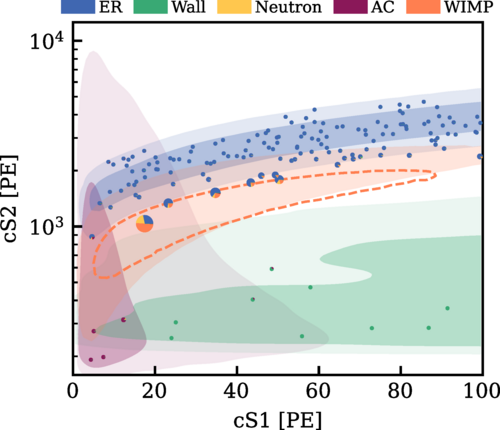
The XENONnT experiment, utilizing a 5.9 ton liquid xenon time projection chamber over a (1.09 ± 0.03) ton yr exposure, achieved low background levels with no significant detection of nuclear recoils from dark matter WIMPs. This resulted in an upper limit of 2.58×10^−47 cm^2 for the spin-independent WIMP-nucleon cross section at a 28 GeV/c^2 WIMP mass, also providing limits for spin-dependent interactions and surpassing previous results from the XENON1T experiment.
E. Aprile et al.(XENON Collaboration)
Phys. Rev. Lett. 131, 041003 (Published 28 July 2023)
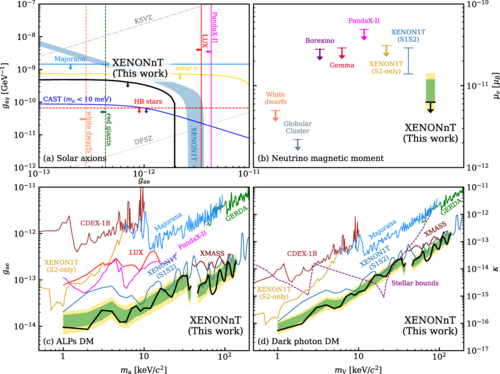
We report on a blinded analysis of low-energy electronic recoil data from the first science run of the XENONnT dark matter experiment. Novel subsystems and the increased 5.9 ton liquid xenon target reduced the background in the (1, 30) keV search region to the lowest ever achieved in a dark matter detector and 5 times lower than in XENON1T. With an exposure of 1.16 ton-years, we observe no excess above background and set stringent new limits on solar axions, an enhanced neutrino magnetic moment, and bosonic dark matter.
E. Aprile et al.(XENON Collaboration)
Phys. Rev. Lett. 129, 161805 (Published 13 October 2022)
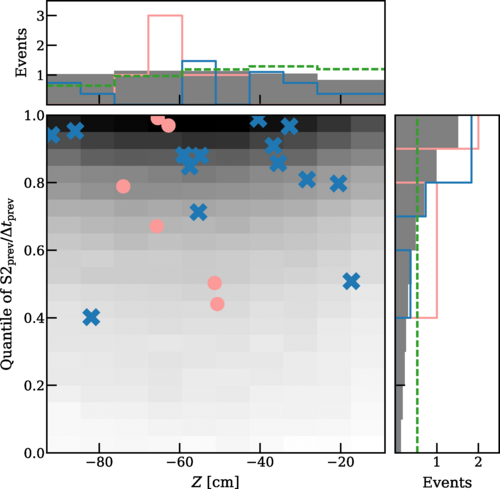
We report on a search for nuclear recoil signals from solar ^8B neutrinos elastically scattering off xenon nuclei in XENON1T data, lowering the energy threshold from 2.6 to 1.6 keV. We develop a variety of novel techniques to limit the resulting increase in backgrounds near the threshold. No significant ^8B neutrino-like excess is found in an exposure of 0.6 t×y. For the first time, we use the nondetection of solar neutrinos to constrain the light yield from 1–2 keV nuclear recoils in liquid xenon, as well as nonstandard neutrino-quark interactions. Finally, we improve upon world-leading constraints on dark matter-nucleus interactions for dark matter masses between 3 and 11 GeV/c^2 by as much as an order of magnitude.
E. Aprile et al.(XENON Collaboration)
Phys. Rev. Lett. 126, 091301 (Published 1 March 2021)
Full List of publications
First Measurement of Solar 8B Neutrinos via Coherent Elastic Neutrino-Nucleus Scattering with XENONnT
E. Aprile et al.(XENON Collaboration)
Phys. Rev. Lett. Accepted 25 September 2024
RELICS: a REactor neutrino LIquid xenon Coherent elastic Scattering experiment
Phys. Rev. D Accepted 25 September 2024
First Search for Light Dark Matter in the Neutrino Fog with XENONnT
arXiv:2409.17868
First Dark Matter Search with Nuclear Recoils from the XENONnT Experiment
E. Aprile et al.(XENON Collaboration)
Phys. Rev. Lett. 131, 041003 (Published 28 July 2023)
Search for New Physics in Electronic Recoil Data from XENONnT
E. Aprile et al.(XENON Collaboration)
Phys. Rev. Lett. 129, 161805 (Published 13 October 2022)
Search for Coherent Elastic Scattering of Solar B8 Neutrinos in the XENON1T Dark Matter Experiment
E. Aprile et al.(XENON Collaboration)
Phys. Rev. Lett. 126, 091301 (Published 1 March 2021)